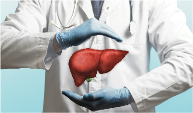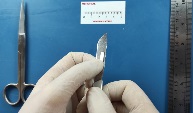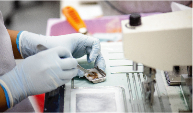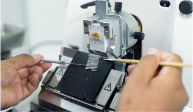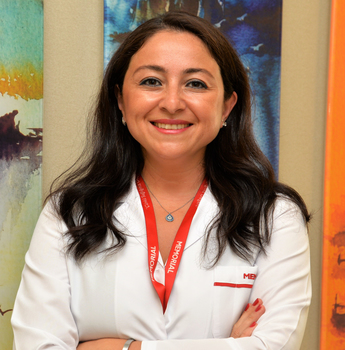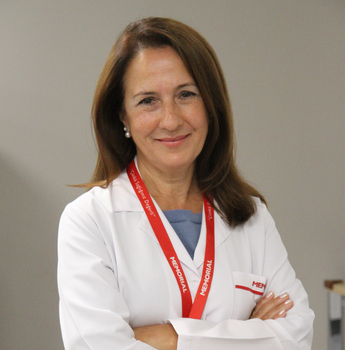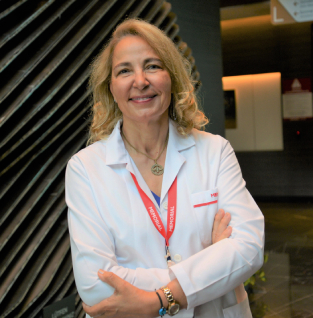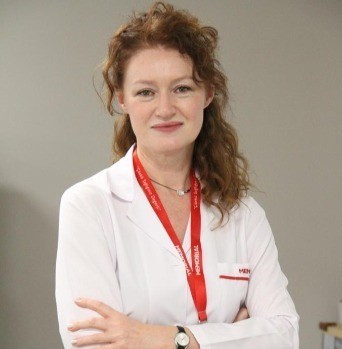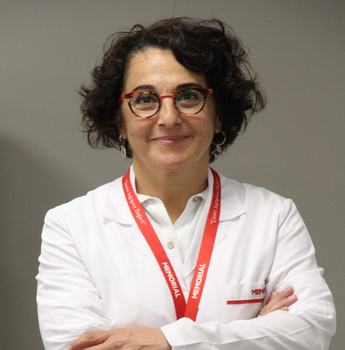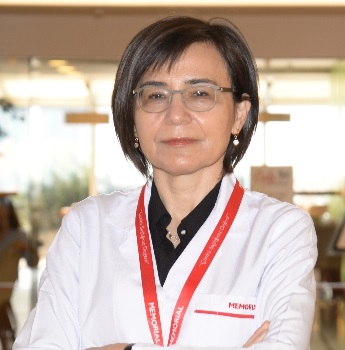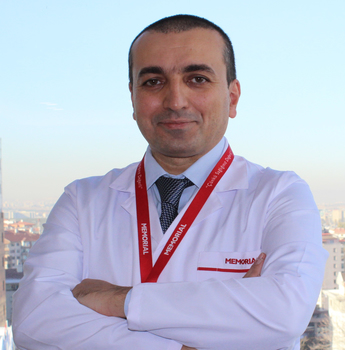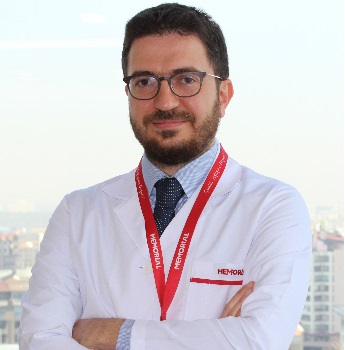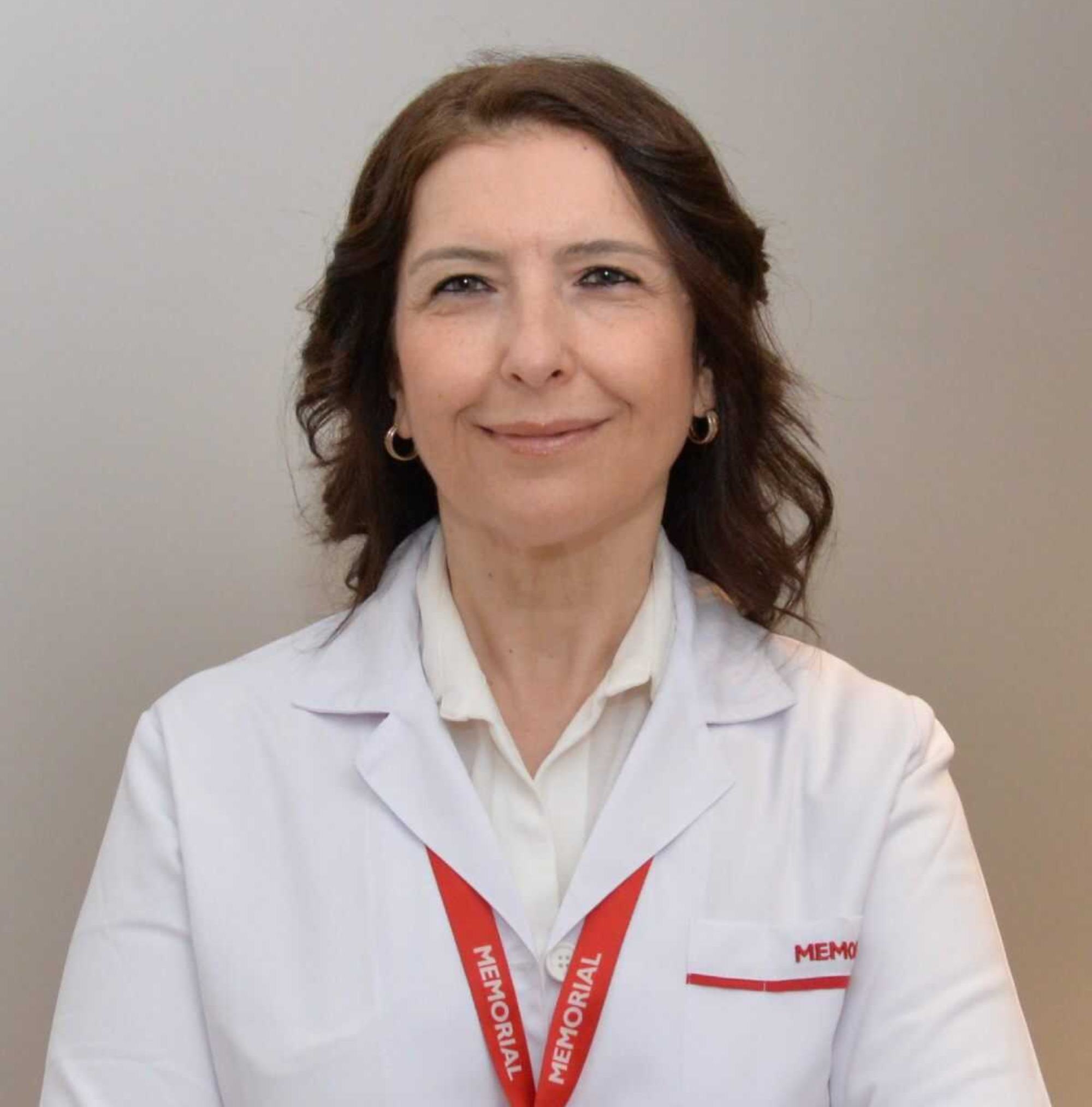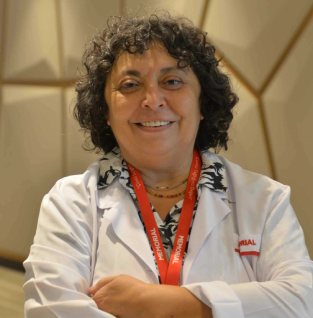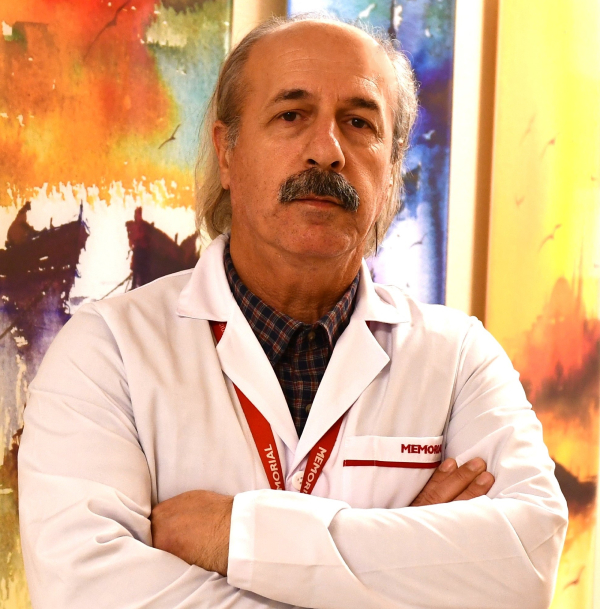STEPS OF THE PATHOLOGICAL EXAMINATION
The final product of the pathology is the "Pathology Report". There is a lot of human effort and multiple laboratory steps behind this pathology report, which is often traced in a single page document. The indispensable part of pathology is human and human labor. Memorial Pathology; carries the journey of pathology starting with microscope to artificial intelligence and robotic applications and crowns human labor with its technological infrastructure. Memorial pathology laboratory has digital workflow and each step is followed digitally in the laboratory.
Idendification
Identification is essential at all stages in pathology. In Memorial Pathology, every stage of the laboratory is followed by a QR code and it is ensured that the error is minimized by digitally monitoring which work is done in each step.
Fixation
In order to prevent the tissues from losing their vitality and becoming unrecognizable, some procedures are applied during tissue processing. First of all, macroscopic examination is performed on the tissues fixed in a liquid called "formaldehyde".
Macroscopic examination
In pathology, the surgical material is examined manually and visually. The macroscopic examination stage allows 50% of the diagnosis to be made.
Tissue processing and preparation of paraffin blocks
The sampled tissues are then taken to the "tissue processing’ and during this 12-hour process, tissues are passed through chemicals such as acetone and alcohol and the water inside the cell is taken and paraffin is ensured to penetrate into the tissue.
Taking sections from paraffin blocks
Sections of 3-4 micrometer thickness are taken from the paraffin blocks with a microtome and these are stained to be visible after they are placed on a 'glass slide'. The dye used in pathology routine is 'Hematoxylin-Eosin' dye.
Microscopic examination
The glass slides that have been completed the laboratory stage are ready for microscopic examination and the morphological changes in the cells are evaluated under the microscope by the pathologist and the disease is diagnosed.
Additional examinations
After the initial evaluation of routine Hematoxylin-Eosine stained sections, additional examinations may be required according to the preliminary diagnoses. The aim here is to enable further investigations by revealing the origins and properties of cells.
Preparation of Pathology Report
Pathology report includes identity information, report information, macroscopic findings, microscopic findings, pathological diagnosis, specific examinations, epicrisis / explanation, intraoperative consultation result.
Our Doctors
Together with our consultant physicians
Prof. İlknur TÜRKMEN
Gynecopathology, Digital Pathology, Dermatopathology
Prof. Gülen Bülbül Doğusoy
Digestive System/Liver and Pancreas - Head/Neck and Cardiovascular PathologyProf. Türkan Atasever Rezanko
Cytopathology, Neuropathology, Bone soft tissue and Head/neck PathologyiAssoc. Prof. Pembe Gül
Güneş
Dermatopathology, Endocrine system pathology, Gynecopathology
Doç. Dr. Serdar Balcı (K)
Liver/pancreas and Digestive system pathology, Uropathology, Neuropathology





